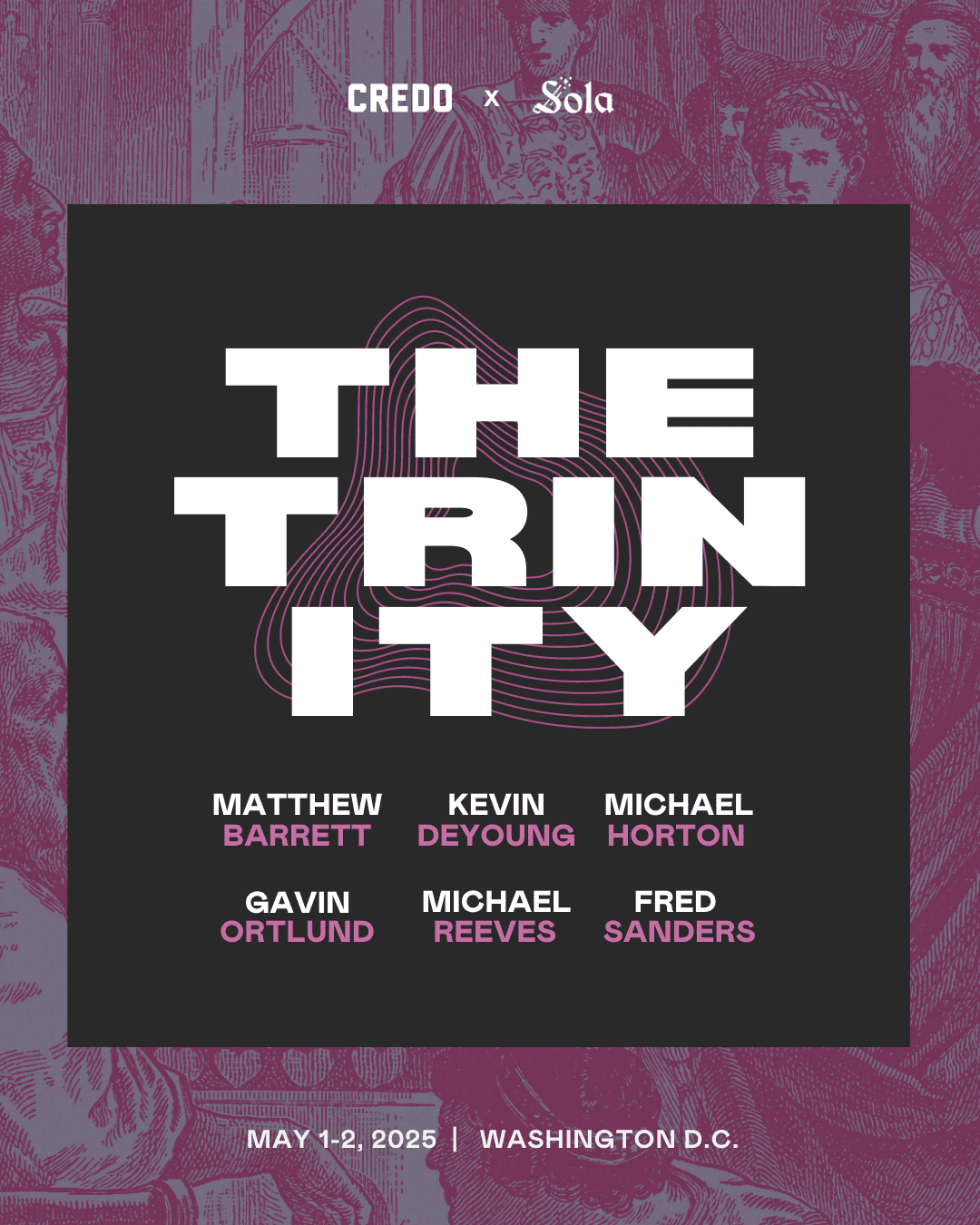
Why did Reformed Scholastics retrieve Aquinas?
For at least some Protestants today, the idea of viewing Thomas Aquinas as anything other than an adversary is anathema. For Karl Barth, perhaps the most influential Protestant theologian of the twentieth century, Thomas’ theology represents the antithesis of a Protestant conception of grace and revelation. Pointing to the defects of the theology of his own times, Barth claims that “the practical non-existence of St. Thomas in the sixteenth century has had even graver consequences, in that the Reformers could not clearly perceive the range of the decisive connection which exists in the Roman Catholic system between the problem of justification and the problem of the knowledge of God, between reconciliation and revelation.”[1]
But historically many Protestant theologians did find it worthwhile to engage Thomas’ thought, and not simply as a foil to prop up their own distinctive approaches to theological topics. Among these were the earliest generations of Reformers, for whom Aquinas was not simply absent, as well as the Protestant scholastics of the later sixteenth and seventeenth centuries, who had a number of different reasons for appreciating, modifying, following, or rejecting Aquinas on various points of doctrine.Historically, many Protestant theologians did find it worthwhile to engage Thomas’ thought, and not simply as a foil to prop up their own distinctive approaches to theological topics. Share on X
The initial Protestant interactions with Thomas and Roman Catholic Thomists of one variety or another were to some extent contingent and contextual. Martin Luther’s earliest polemical opponent was the Dominican Silvester Prierias (1456/1457–1527). The Dominicans were well-known for their theological acumen and concern for doctrinal integrity, so it is unsurprising that a member of this order would take up the pen to defend the church and the papacy from Luther’s increasingly critical attacks. A Dominican like Prierias would naturally turn to the thought of Thomas as an authority, and so part of Luther’s exchanges with Prierias included arguments over the nature of Thomas’ theological significance.
As David S. Sytsma helpfully articulates, and contra Barth’s claims of his “practical non-existence,” Luther’s largely negative assessments of Thomas were not universally shared among the earliest generations of Protestant reformers.[2] Former Dominicans, such as Martin Bucer (1491–1551), continued to be positively influenced by their prior intellectual and theological formation. The same is true for the Italian reformers Peter Martyr Vermigli (1499–1562) and Girolamo Zanchi (1516–1590), who were foremost among those John Patrick Donnelly identifies as part of a distinctive “Calvinist Thomism.”[3]
David C. Steinmetz two decades ago, observed, “The story of Thomas Aquinas and Protestantism has yet to be written and it is not identical with the story of Thomas and Luther.”[4] Indeed, the story of the relationship between Aquinas and Protestantism doesn’t end in the earliest generations of the Reformation, but includes the increasingly substantive and extended engagement with Thomas by the Protestant scholastics of the later sixteenth and seventeenth centuries.
Scholasticism, Old and New
To understand why Protestant scholastics would engage with Thomas Aquinas, as well as other medieval figures, we must first understand the phenomenon of scholasticism itself, in its initial expressions and maturation in the medieval period as well as its later development in the early modern era.
Medieval scholasticism emerged out of the historical circumstances surrounding the Christianization, and eventual dissolution, of the Roman Empire. In this way we might understand scholasticism to be a development of monasticism, which sought to preserve and protect authentic Christian discipleship in a world fraught with temptation, corruption, and chaos. As monastic orders founded new institutions, including schools, new forms of instruction and learning took shape. And this is perhaps the best and primary way to understand scholasticism, that is, as a method of study adapted and appropriated for education in schools.We might understand scholasticism to be a development of monasticism, which sought to preserve and protect authentic Christian discipleship in a world fraught with temptation, corruption, and chaos. Share on X
The first medieval scholastic textbook was Peter Lombard’s Sentences, a twelfth-century collection of theological teachings from the patristic period, organized and interspersed with commentary, elucidation, and discussion. By the time of Thomas Aquinas a hundred years later, the Sentences were established as the primary text for scholastic theology. To advance and earn a degree as a theological teacher, a student had to write a commentary on Lombard’s Sentences.
Like others, Thomas Aquinas wrote a Sentences commentary, but went on to develop his own theological system more fully in works like the Summa contra Gentiles and the Summa theologica, as well as in a number of commentaries on scripture. By Thomas’ time, the standard scholastic format was to explore a topic through a logical progression of answers to questions about the object of study. It was customary to inquire whether something exists before discussing what kind of thing it is, what its qualities or characteristics are, and so on. Often the scholastic exposition would follow as answers to a question (whether explicit or implicit), such as, “What is a sacrament,” and, following that discussion, “What baptism is.”[5]
A basic tool for such logical and systematic treatment of theological topics is the ability to distinguish between different senses of something and between different uses or applications of a truth. Scholasticism, in this way rests on the ability to rightly distinguish terms and definitions as well as practical means and uses. The procedure in Thomas’ Summa theologica to include a set of objections, followed by Thomas’ “On the contrary” and “I answer that,” before concluding with specific responses to the initial objections, is a thoroughgoing development of this kind of logical and systematic exploration of the nature of theological truths.
If Thomas’ synthetic reconciliation of Christian faith and human reason is the pinnacle of medieval scholasticism, Thomas’ system is not the only theological program from the Middle Ages to continue to have influence, and the scholastic program continued into the late medieval period and into the early modern era, even as it was challenged by and responded to other developments, including the rise of humanism and the Reformation.
It is commonplace in early modern intellectual history to speak of another phase or period of scholasticism following that of the medieval era. This later phenomenon is sometimes called “second scholasticism” or “baroque scholasticism,” and it typically refers to the revival of Roman Catholic scholastic theological approaches in the sixteenth and seventeenth centuries. Rather than commenting on Lombard’s Sentences, these later scholastics more often took Thomas’ Summa theologica or other scholastic texts as their point of departure, and continued to develop increasingly complex theological discussions responding to more than a millennium of Christian doctrinal development. A standard format in second scholasticism is the treatment in moral theology of the topics of justice and right (de iustitia et iure), grounded in Thomas’ treatments of them in the Summa theologica.As Protestant communities codified and formalized their confessional identities, it became necessary to develop theological curricula and systems for their primary, secondary, and higher educational structures. Share on X
We can best understand Protestant scholasticism of the early modern period as a particular expression or variant of this broader second or “baroque” scholasticism.[6] That is, as Protestant communities increasingly codified and formalized their confessional identities and built new and reformed already-existing institutions, it became necessary to develop theological curricula and systems for their primary, secondary, and higher educational structures. And just as the medieval scholastics developed a system appropriate to their own circumstances and needs, Protestants (as well as Roman Catholics) of the early modern period developed a methodological approach to learning for their schools. We typically identify this as Protestant scholasticism, but even as Reformed and Lutheran schools had their own distinctive doctrinal emphases and confessional commitments, they shared with each other as well as with Roman Catholics a number of common methodological tools and approaches.

